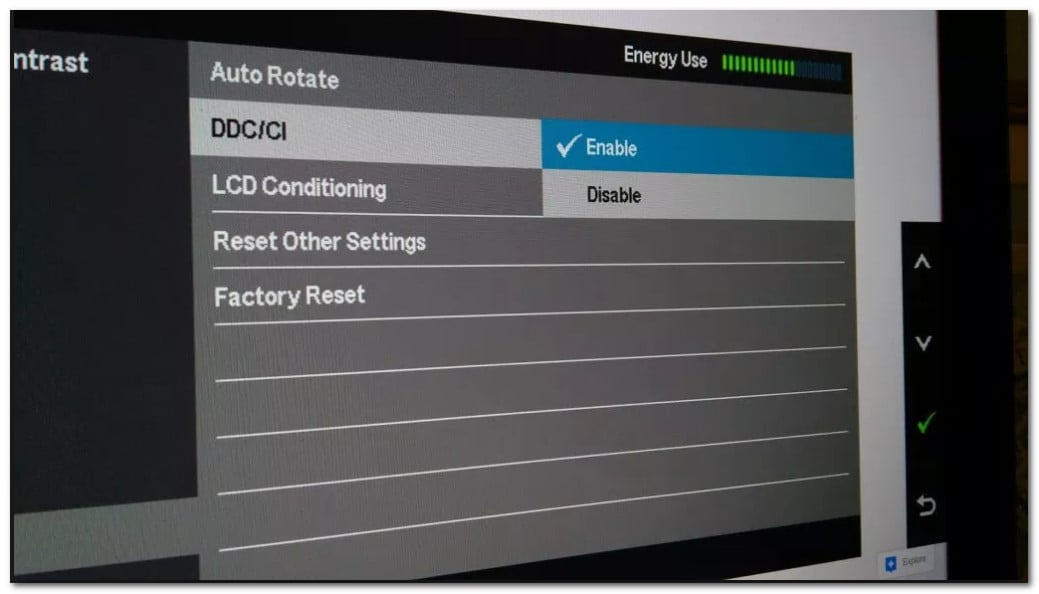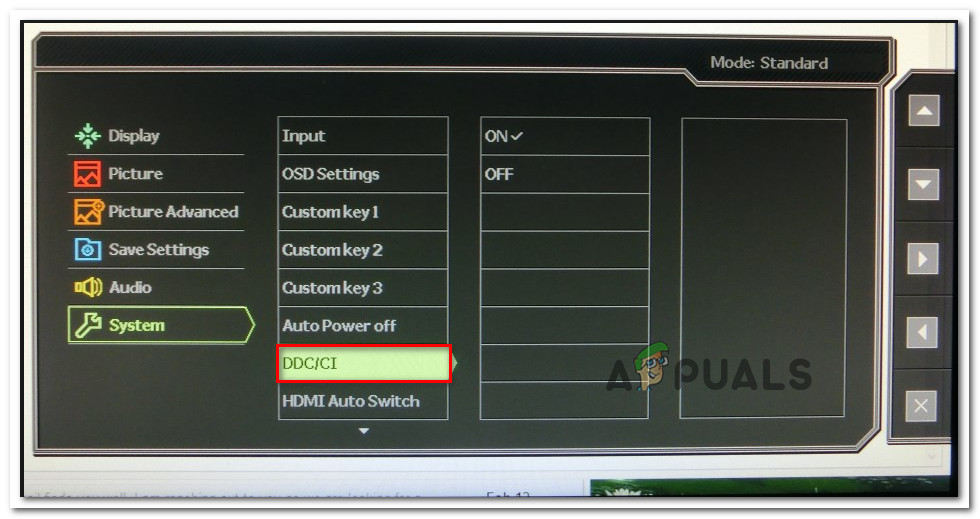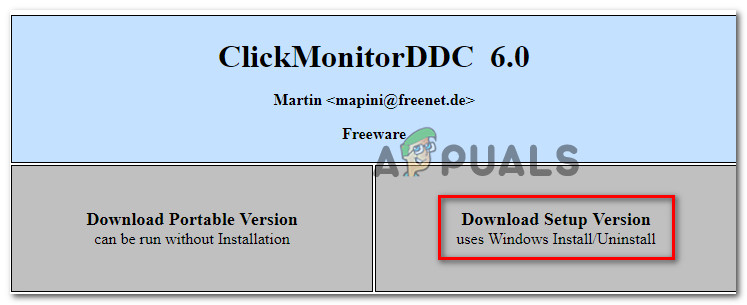What is DDC/CI?
Display Data Channel (DDC) / Command Interface (CI) is a type of communication between the computer and the monitor. It holds a collection of protocols used to facilitate the transmission of display-related information between the computer display and the display adapter. DDC essentially allows the monitor to inform the computer about it’s supported display modes. But even more important, a display data channel allows the user to oversee and change monitor features such as the brightness, contrast and color palette directly from their computer. On a very basic level, DDC/CI provides the Plug & Play functionality to the monitor. A lot of monitor models will have less than intuitive user interfaces, so it’s understandable why some users are looking for ways to avoid using the clunky buttons that many monitors models have. The command Command Interface (CI) is the channel that the two involved parties (the computer and the monitor) are using to send and receive commands to each other. Some DDC/CI monitors can even support the auto-pivot technology – a rotation sensor built inside the monitor allows it to keep the display straight even if the monitor is physically moving in horizontal and vertical positions.
How to use DDC/CI
In order to use DDC/CI, you first have to ensure that your monitor is capable of supporting it. But if you’ve purchased your monitors in the last 3-4 years or so, DDC/CI should be supported. There are some monitor manufacturers that have developed their own proprietary software that works with DDC/CI (such as Samsung MagicTune), but that obviously won’t work with monitors outside Samsung’s sphere. If you’re looking for a universal program that will allow you to use DDC/CI regardless of your monitor manufacturer, we’ve got you covered. This is ideal those cases where you’re using a multiple monitor setup (from different manufacturers) – DDC/CI will allow you to gain control over all your active displays. ClickMonitorDDC is a portable freeware tool that will allow you to adjust the brightness and contrast of any DDC compatible monitor just by adjusting a series of sliders. You’ll have easy access to your monitor’s controls at any time just by clicking on the software’s notification icon (in the Taskbar Tray area). Here’s a quick guide on how to enable, install and configure DDC/CI using ClickMonitorDDC: When you launch the application for the first time, it will automatically detect all the monitors connected to your computer. We tested it on a dual-monitor setup (Asus + Acer) and it worked flawlessly. You can see all your connected monitor at the top, and you can control each one individually. On top of adjusting things like the brightness, contrast and the volume of the built-in speakers, you can also switch the Input sources or power them off without having to physically press the power button. You can also dive into the settings of ClickMonitorDDC to assigns custom names to your monitors and facilitate easy access. Note: Keep in mind that not all monitors will allow you to change the contrast. Based on our investigations, this is typically occurring with laptop displays. If you’re not fond of the UI interface of ClickMonitorDDC, we also found a few other free alternatives for you:
Display Tuner (32 bit only)softMCCSMagicTune (Samsung only)
But keep in mind that these programs are either exclusive to a certain manufacturer or will require a technical person to do the initial configuring part. So if you’re looking for something simple that will allow you to set it up in minutes, I’d stick with ClickMonitorDDC.
5 Best D5 and DDC PumpsFix: The Function Attempted to use a Name that is Reserved for use by Another…What is Takeown and How to Use it to take Ownership of Files and FoldersHow to Sign Into and Use AIM


